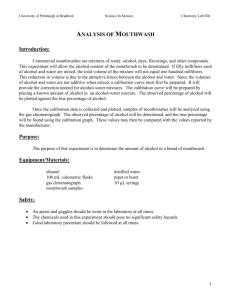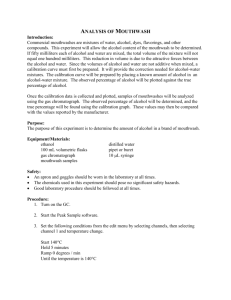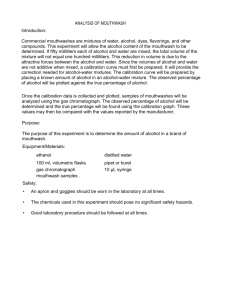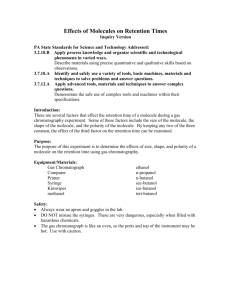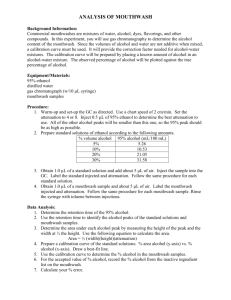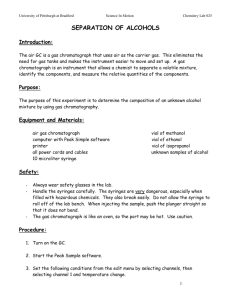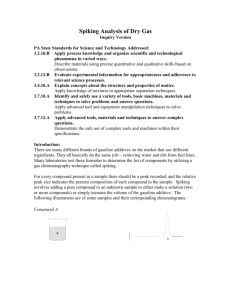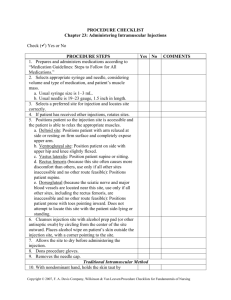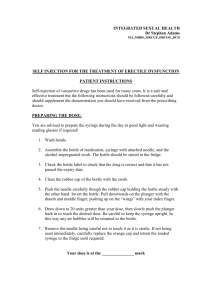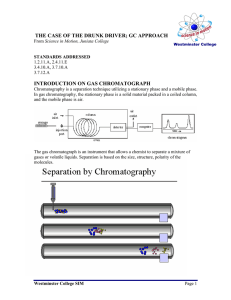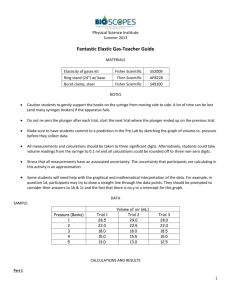Analysis of Mouthwash
advertisement
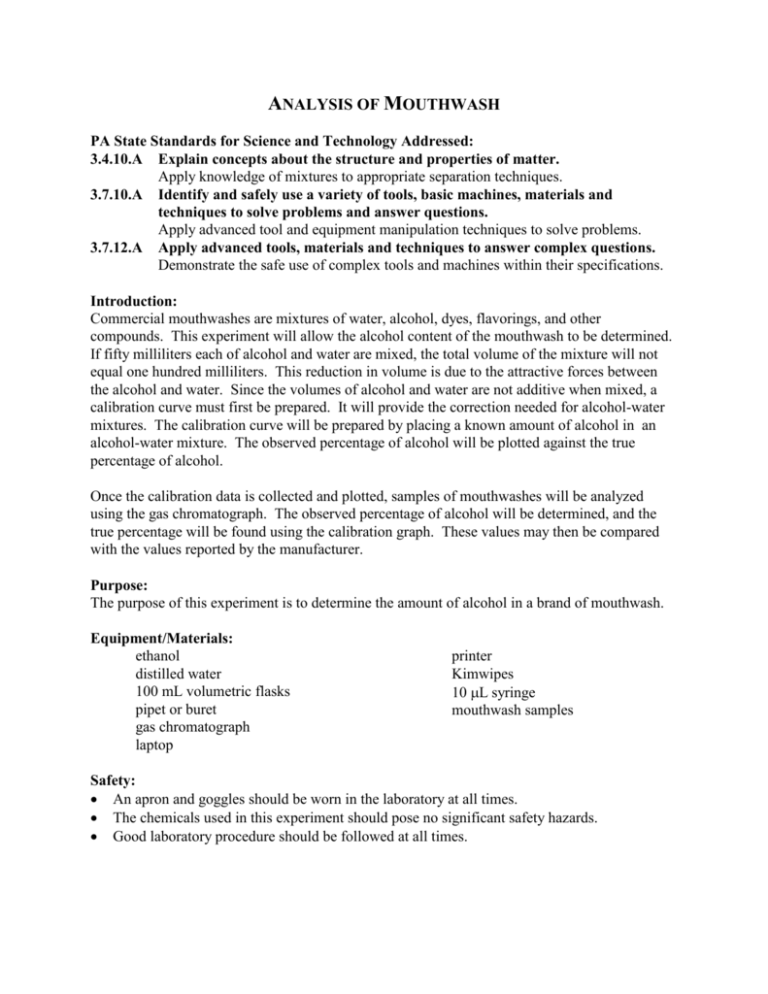
ANALYSIS OF MOUTHWASH PA State Standards for Science and Technology Addressed: 3.4.10.A Explain concepts about the structure and properties of matter. Apply knowledge of mixtures to appropriate separation techniques. 3.7.10.A Identify and safely use a variety of tools, basic machines, materials and techniques to solve problems and answer questions. Apply advanced tool and equipment manipulation techniques to solve problems. 3.7.12.A Apply advanced tools, materials and techniques to answer complex questions. Demonstrate the safe use of complex tools and machines within their specifications. Introduction: Commercial mouthwashes are mixtures of water, alcohol, dyes, flavorings, and other compounds. This experiment will allow the alcohol content of the mouthwash to be determined. If fifty milliliters each of alcohol and water are mixed, the total volume of the mixture will not equal one hundred milliliters. This reduction in volume is due to the attractive forces between the alcohol and water. Since the volumes of alcohol and water are not additive when mixed, a calibration curve must first be prepared. It will provide the correction needed for alcohol-water mixtures. The calibration curve will be prepared by placing a known amount of alcohol in an alcohol-water mixture. The observed percentage of alcohol will be plotted against the true percentage of alcohol. Once the calibration data is collected and plotted, samples of mouthwashes will be analyzed using the gas chromatograph. The observed percentage of alcohol will be determined, and the true percentage will be found using the calibration graph. These values may then be compared with the values reported by the manufacturer. Purpose: The purpose of this experiment is to determine the amount of alcohol in a brand of mouthwash. Equipment/Materials: ethanol distilled water 100 mL volumetric flasks pipet or buret gas chromatograph laptop printer Kimwipes 10 L syringe mouthwash samples Safety: An apron and goggles should be worn in the laboratory at all times. The chemicals used in this experiment should pose no significant safety hazards. Good laboratory procedure should be followed at all times. Procedure: 1. Turn on the GC and start the Peak Sample software. A data acquisition system popup should appear with phrases like initializing, waking up, signing on, setting modes, and calibrating. If you get a popup saying can’t wake – check power and cable, try one of the following options. a. Check to make sure that the cable between the GC and computer is properly attached and that the GC is on. b. Close the program. Unplug the USB cord from the computer, then plug it in again. Restart the program. If it still won’t wake, try the next option. c. Click on the Edit Menu, then select Overall. In the COM Port/USB device number box, try a number from 1 – 5. Keep trying until the data acquisition system begins to function. 2. Click on edit menu, then select channels. Under Channel 1, pick Temperature. Click on the numbers to highlight them, then click Change. Change the numbers as follows: Start 150C Hold 7 minutes Ramp 0 degree / min Until the temperature is 150C 3. Be sure the time scale starts at zero and ends at 10 min. Use the arrows to adjust. 4. Prepare standard solutions of ethanol according to the following list if 95% ethanol is used. Each lab group should prepare solutions as assigned by the instructor. Solution A B C D % volume alcohol 5% 10% 20% 30% 95 % alcohol (mL/100 mL) 5.26 10.53 21.05 31.58 5. Clean the syringe by rinsing it 10 -- 15 times with one the 5% ethanol standard. With the plunger fully depressed, place the needle into the sample. Slowly draw up the plunger to obtain a sample in the syringe. Remove the syringe from the sample. Discharge this sample into the sink or onto a Kimwipe. Draw up a second sample and discharge it. Repeat. Do not push on the plunger when the needle is inside a sample. 6. Place the syringe needle back into the sample and withdraw over 1 microliter. Remove the needle from the sample bottle, then depress the plunger to the 1 microliter line. Wipe the needle with a Kimwipe. 7. Click on the Z or button on the run screen to zero the current. 8. Insert the needle carefully into the injection port of the GC until the entire needle is inside the instrument. 9. Inject the sample and start the data collection simultaneously by depressing the syringe plunger and pressing the space bar on the computer at the same time. 10. When the sample peak of a standard returns to baseline, the run may be stopped by pressing the end button on the computer. After pressing end, print the graph. Be sure to label the graph. 11. Repeat the steps with the other standards, then as many mouthwash samples as time allows. 12. Plot % area alcohol (y-axis) vs. % alcohol (x-axis). Draw a best fit line. Use this calibration graph to determine the % alcohol in the original mouthwash sample. Data Table: Percent Alcohol (v/v) 5 10 20 30 Brand Area Due to Alcohol Area Due to Alcohol % Alcohol Accepted Value Percent Error Calculations: 1. Plot % area alcohol (y-axis) vs. % alcohol (x-axis). Draw a best fit line. 2. Use the best fit line to determine the % alcohol in the original mouthwash sample. 3. Determine the percent error between your experimental value for the percent of ethanol and the accepted value for each mouthwash tested. Questions: 1. Why is it important to wipe the needle before injecting the sample into the instrument? 2. What are some sources of error for this experiment? 3. How could these errors be reduced?
